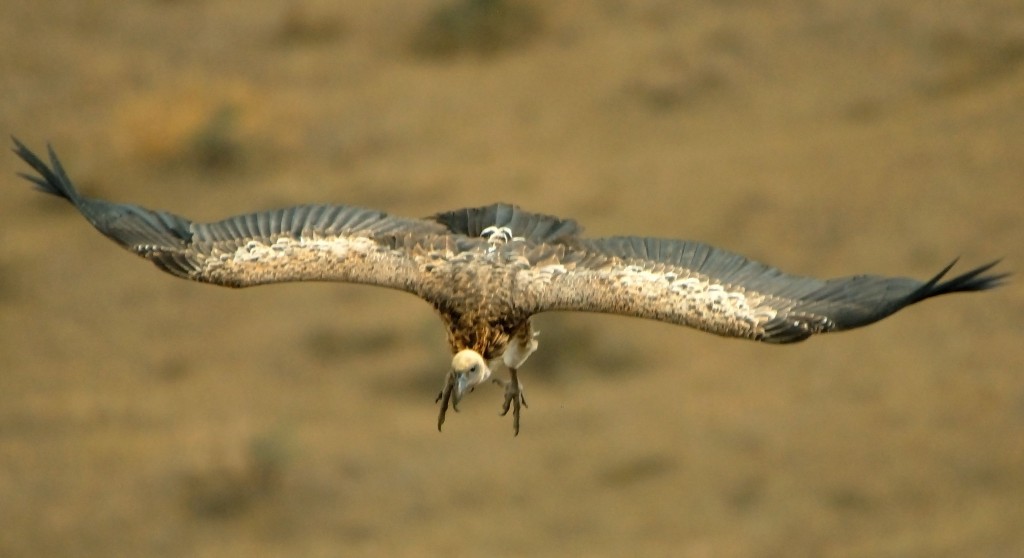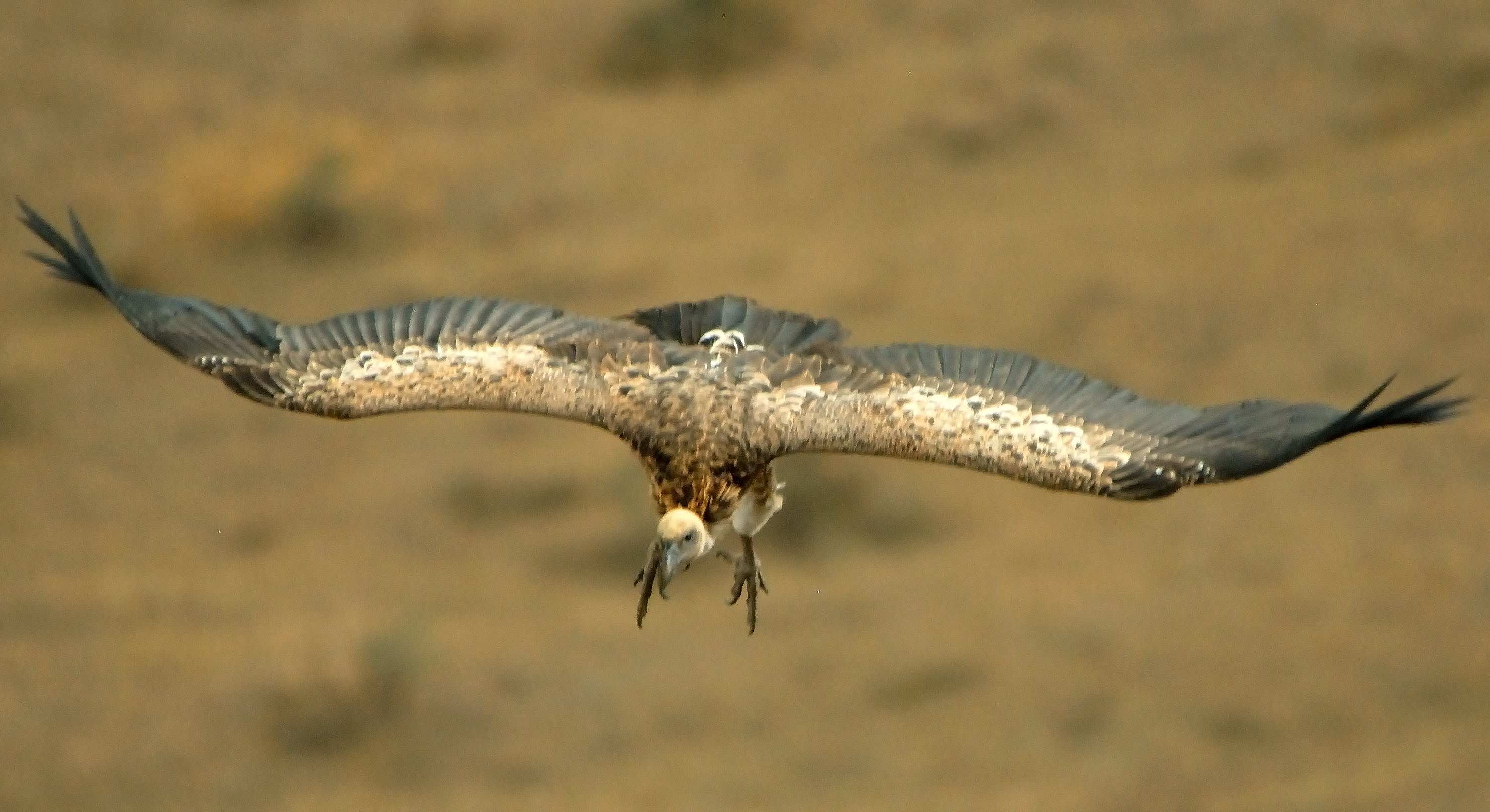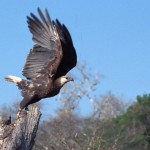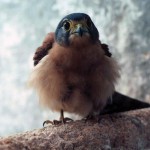The Status of Raptors in Ethiopia by Anteneh Shimelis
Ethiopia is a land-locked country located in the horn of Africa. It is the second most populous nation in Africa with over 85.2 million people and the tenth largest by area. Seventy-two species of raptors inhabit the country of which 31 are migrants and 41 are residents. These raptors inhabit a wide range of habitats including lowland Acacia savannah and woodlands, highland forests, and afro-alpine moorland habitats. A systematic national raptor survey has not been carried out to determine population numbers and at this scale the available information is very scant. This article attempts to estimate the population status for individual species and to calculate actual population sizes for some sites such as the Bale Mountains National Park, which is well-known to the author (Shimelis 2008). While information is generally unavailable, efforts have been made to show it as a gap and existing information is reported below. The available information regarding threats is scantier than the population status data and I relied mostly on many years of field notes to provide a sensible result that shows the threats that raptors of Ethiopia are facing today. Threats were quantified as the proportion of raptor species that either are affected or are potentially vulnerable.

Population status
Knowledge regarding the population status of 72 raptor species that occur in Ethiopia is far from complete. Except for a very few species, most of the data on species’ population status is not available. Even for those with some data available, most is only for the Bale Mountains National Park (BMNP). Review of many years of field notes revealed that several raptor species in Ethiopia are rare and even those that are widespread are poorly known. Despite this, it is my experience that the population estimates provided for some species that reside in BMNP are the highest in the country. This refers to the population estimates for B. augur, F. biarmicus, A. rapax, A. nipalensis, A. chrysaetos and A. verreauxii. Specifically, A. chrysaetos is confined to BMNP and the estimate provided should be considered the species total nationally. Except for P. opivorus, the estimates provided for BMNP are actual totals that resulted from a census. The estimate for N. percnopterus was gained from a recent BirdLife International survey in Ethiopia and this number is slightly smaller than numbers reported in December 1994 (Mundy 2000).
Table 1: The status of raptors of Ethiopia (R = resident, P = palearctic migrant, M = inter-African migrant BMNP= Bale Mountains National Park)
| Common Name | Scientific Name | Migratory status | Population status |
| African Cuckoo Hawk | Aviceda cuculoides | R | ? (rare) |
| Honey Buzzard | Pernis opivorus | P | ? (but 2 individuals in Harena Forest BMNP) |
| Bat Hawk | Macheiramphus alcinus | R | ? (rare) |
| Black-shouldered Kite | Elanus caeruleus | R | ? (Widespread in northeastern acacia woodlands) |
| Swallow-tailed Kite | Chelictinia riocouni | M | ? (5 individuals at Aldeghe-Afar triangle) |
| Black Kite | Milvus migrans | M/P | ? (Widespread in all urban and rural habitats) |
| African Fish Eagle | Haliaeetus vocifer | R | ? (Widespread across lake habitats) |
| Lammergier | Gypaetus barbatus | R | ? (but about 40 individuals in the BMNP) |
| Egyptian Vulture | Neophron percnopterus | R | ? (about 1400 in the Afar triangle) |
| Hooded Vulture | Necrosyrtes monachus | R | ? (Widespread in rural and urban habitats) |
| White-backed Vulture | Gyps africanus | R | ? (Widespread in rural and urban habitats) |
| Rϋppell’s Vulture | G. rueppelli | R | ? (Widespread in rural and urban habitats) |
| Griffon Vulture | G. fulvus | P | ? |
| Lappet-faced vulture | Torgos tracheliotus | R | ? (rare but widespread) |
| White-headed Vulture | Trigonoceps occipitalis | R | ? (rare) |
| Short-toed Eagle | Circaetus gallicus | P/R | ? (rare) |
| Brown Snake Eagle | C. cinereus | R | ? (Widespread at lowland woodlands) |
| Western Banded Snake Eagle | C. cineraascens | R | ? (rare) |
| Bateleur | Terathpius ocaudatus | R | ?(rare in lowland forests) |
| Gymnogene | Polyboroides typus | R | ? |
| European Marsh Harrier | Circus aeruginosus | P | ?(Widespread across wetlands) |
| African Marsh Harrier | C. ranivorus | V | ? (rare) |
| Pallid Harrier | C. macrourus | P | ? (90 individuals in the BMNP) |
| Montagu’s Harrier | C. pygargus | P | ? |
| Dark Chanting Goshawk | Melierax metabates | R | ? (Widespread in lowland woodland habitat) |
| Pale Chanting Goshawk | M. canorus | R | ? (Widespread in lowland woodland habitats) |
| Gabar Goshawk | M. gabar | R | ? |
| Black Goshawk | Accipiter melanoleucus | R | ? |
| Ovampo Sparrowhawk | A. ovampensis | M | ? (rare) |
| European Sparrowhawk | A. nisus | P | ? (rare) |
| Red-breasted Sparrowhawk | A. rufiventris | R | ? |
| Little Sparrowhawk | A. minnulus | R | ? (rare) |
| African Goshawk | A. tachiro | R | ? (rare) |
| Shikra | A. badius | R | ? (rare) |
| Levant Sparrowhawk | A. brevipes | P | ?(rare) |
| Grasshopper Buzzard | Butastur rufipennis | M | ? (rare) |
| Lizard Buzzard | Kaupifalco monogrammicus | R | ? (rare) |
| Common Buzzard | Buteo buteo | P | ? (rare) |
| Forest Buzzard | B. oreophilus | R | ? (Widespread at forest edges) |
| Long-legged Buzzard | B. rufinus | P | ? (4 individuals in BMNP) |
| Red-necked Buzzard | B. auguralis | R | ? (rare) |
| Augur Buzzard | B. augur | R | ? (250 individuals in the BMNP) |
| Wahlberg’s Eagle | Aquila wahlbergi | M | ? (Widespread across lowland woodlands) |
| Lesser-spotted Eagle | A. pomarina | P | ? |
| Greater spotted Eagle | A. clanga | P | ? |
| Tawny Eagle | A. rapax | R/P | ? (240 individuals in the BMNP) |
| Steppe Eagle | A. nipalensis | P | ? (200 individuals in the BMNP) |
| Imperial Eagle | A. heliaca | P | ? |
| Black Eagle | A. verreauxi | R | ? (30 individuals in the BMNP) |
| Golden Eagle | A. chrysaetos | R | 180 individuals in the BMNP |
| African Hawk Eagle | Hieraaetus spilogaster | R | ? (rare) |
| Booted Eagle | H. pennatus | P | ? (rare) |
| Ayres’s Hawk Eagle | H. ayresii | R | ? (rare) |
| Long-crested Eagle | Lophaetus occipitalis | R | ? (Widespread across lowland woodlands) |
| Crowned Eagle | Stepahnoaetus coronatus | R | ? (Widespread across highland forests) |
| Martial Eagle | Polemaetus bellicosus | R | ? (Widespread across lowland forests) |
| Osprey | Pandion haliaetus | P | ? (rare visitor of wetlands) |
| Lesser Kestrel | Falco naumanni | P | ? (widespread but not common) |
| Common Kestrel | F. tinnunculus | R/P | ? (35 individuals in the BMNP) |
| Greater Kestrel | F. rupicoloides | R | ? (rare) |
| Fox Kestrel | F. alopex | R | ? (rare) |
| Grey Kestrel | F. ardosiaceus | R | ? (rare) |
| Western Red-footed Falcon | F. vespertinus | P | ? (rare) |
| Eastern Red-footed Falcon | F. amurensis | P | ? (rare) |
| Red-necked Falcon | F. chicquera | R | ? (rare) |
| European Hobby | F. subbuteo | P | ? (rare) |
| African Hobby | F. cuvierii | M | ? (rare) |
| Lanner Falcon | F. biarmicus | R | ? (147.5 individuals in the BMNP) |
| Saker Falcon | F. cherrug | R | ? (rare) |
| Taita Falcon | F. fasciinucha | R | ? (rare) |
| Peregrine Falcon | F. peregrinus | P/R | ? (widespread but uncommon) |
| Barbary Falcon | F. pelegrinoides | P | ? (rare) |
Threats to raptors
Ethiopia is predominantly an agricultural society where dire shortage of agricultural land is forcing farmers to clear and convert substantial habitats on a daily basis. This has resulted in a loss of habitat for raptors, reduced the amount of suitable land for their prey, and decreased suitable nest sites and roosting areas. This is seriously affecting both resident and migrant raptors. Directly linked to this is the widespread use of ‘artificial’ agricultural inputs such as fertilizers and pesticides that contaminate the general environment and affect all raptor species. Along some of the busiest highways in the country accidents that kill livestock are common and raptors that scavenge the remains are frequently run over by truck drivers. Although hunting raptors in the country is illegal (Assefa pers. comm.), I have encountered people, particularly in the Bale Mountains, carrying out their own small expeditions to hunt Peregrine Falcons and Golden Eagles. It is also suspected that small-scale hunting of vultures might be occurring in the country. Accidental poisoning affects raptors, particularly vultures, that forage on poisoned livestock remains, that are meant for mammalian carnivores (Birhanu pers. comm.).

Conclusion and recommendation
Basic data on population status and threats in Ethiopia is lacking. It is of paramount importance to start with a national census that provides the numbers of at least the commoner species in the country. Using the existing network of protected areas, there is likely to be a network of people exchanging information regarding what is happening to raptors inside and near National Parks and reserves. Evaluating the impact of climate change has to be thought about now more than ever before it is too late to act.
Anteneh Shimelis is a biologist by training and has a PhD in ecology which was supported by The Peregrine Fund. He was one of the people who did carry out the tasks that led to compilation of information on the Important Bird Areas of Ethiopia. He took part for more than five years in the monitoring of waterfowl in Ethiopia as part of the collaborative initiative between Wetlands International and the Ethiopian Wildlife and Natural History Society. He was one of the people that developed the International Action Plan for the Lappet-faced Vulture. As part of his PhD he has studied the dynamics of the interrelationships between raptors of the Bale Mountains National Park and their prey.
References
Mundy, P.J. 2000. The status of Vultures in Africa during the 1990s. Raptors at Risk (Chancellor, R. D. & Meyburg, B. U. eds). World Working Group on Birds of Prey and Owls.
Shimelis, A. (2008). Prey-predator (raptor) dynamics in the afro-alpine habitats of the Bale Mountains National Park, south-east Ethiopia. PhD thesis, Addis Ababa University.





As we discovered and published the first study on the Golden Eagle in the Balé Mountains, we are very surprised by the 180 individuals estimated here.
Notably in comparison with the 30 Black Eagles as suitables habitats and distribution of both species are approximately the same.
More informations are needed about the methods of study as this estimation of the Golden Eagle population seem totally over estimated.
Dear Dr. Clouet
Many thanks for this. When we were censusing raptors we sued the scan sampling technique. There were 15 scan sampling plots around the afro-alpine moorland that were separated with a minimum of 2.5 km. We used the mean from these to come up with a total for a species. Further more we have found 52 Golden Eagle nests whilst we were collecting pellets for diet analysis.
Cheers,
Anteneh
Up too now my personal study of raptors has been in asia,Pakistan and surrounding countries,I am finding this site has reminded me of my original intereast in African birds,I am planning a trip this spring too Cape Bon to see if I can get stats on Spar numbers over the years from Local Trappers
I am doing a research on birds.
my title is diversity,habitat association and relative abundance of avian fauna one national park. so may you give me any comments and advice with a great excuse.